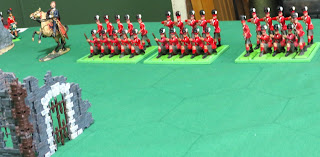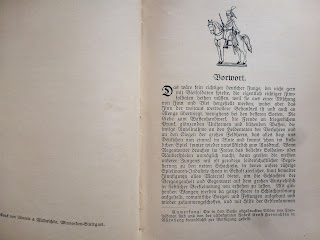For our latest game we decided to try a Napoleonic version of Battle Cry and Anthony suggested the Peninsular War Battle of Saguntum 1811.
When I have a little money, I buy Toy Soldiers; and if I have any left, I buy food and clothes. (with apologies to:) ERASMUS
Tuesday, 5 August 2025
Battle of Saguntum 1811 - 54mm Battle Cry game.
Wednesday, 23 April 2025
Travel Battle - A Napoleonic wargame with 54mm toy soldiers
Travel Battle is a boardgame designed by Michael Perry and produced by Perry Miniatures, the well known wargame figure manufacturers, it's based on battles in the Napoleonic period so Anthony and I thought we'd see how well the system translated to a tabletop wargame with 54mm toy soldiers. Here's how it went:
Saturday, 2 November 2024
Lionheart - a medieval wargame with 54mm toy soldiers
Lionheart is a medieval boardgame published by Parker Brothers in 1997, played on a square grid with 25mm pieces the aim is to capture the enemy King or destroy all of his army, it plays a bit like a game of chess. We thought we'd try out the basic game to see if it would translate to a wargame with 54mm toy soldiers, here's how it went:
Saturday, 21 September 2024
Malcolm III and William Rufus 1093 - Battle Ravens
Since discovering that the boardgame Battle Ravens translates so well to the tabletop for a wargame with 54mm toy soldiers we thought we'd give it another outing.
Our first trial of the game was a standard shieldwall encounter between Vikings and Saxons, but the game also offers sets of cards to portray the national characteristics of Scots, Welsh and Normans so we decided to try something different.
For a scenario I chose the border raid in 1093 by the Scots of Malcolm III, in support of Saxon refugees, against a frontier outpost held by the Normans of William Rufus.
Monday, 1 April 2024
Battle Ravens - Dan Mersey
It's been a while since we last had a game but this weekend I finally managed to clear enough space for one. Battle Ravens is a board game designed by Dan Mersey with graphics provided by Peter Dennis, both well known names in the gaming world, the former for rules systems and the latter for his excellent ranges of paper soldiers. The game is about combat in a Viking/Saxon shieldwall and comes with opposing 35mm armies of Peter's card mounted paper soldiers. Anthony thought it would be good to play using 54mm toy soldiers so I dusted off the Dark Ages collection and this is how it went:
The two armies square up to form shieldwalls, each has armoured Hirdmen (Hearthguards) in the front line, unarmoured Bondi in the second line and a group of Thrals (skirmishers) behind them. The command units overseeing each shieldwall have no role in the game but I included them to represent the players, and because they look good.
Friday, 13 October 2023
German Wargame Rules from 1917
Strategie und Taktik des Spiels mit Bleisoldaten (Strategy and Tactics for games with lead soldiers)
Pentagon Publishing, Stuttgart, 1917 78 pages monochrome.
I had been hunting this little tome for many years but it constantly evaded me until last year when I bit the bullet and treated myself for my birthday!


















































